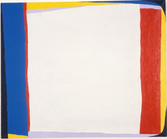 David Galenson is a world-class economic researcher and professor at the University of Chicago, who also happens to have deep interest in the process of innovation. In his book "Conceptual Revolutions in Twentieth Century Art", Dr. Galenson applied some of his substantial research skills to art history and the phenomenon of creative change; there are whole parts of the book in which I could have just crossed out "art" or "artist" and "20th century" replaced them with the words "medicine", "physician" and "21st century" and the points would be equally valid and powerful. This is especially true when examining acceptance of innovation, the role and influence of peers in managing creative change and the issue of 'rate of change'; below are a few excerpts from the book, along with my parallel thoughts with regard to the world of healthcare…..
David Galenson is a world-class economic researcher and professor at the University of Chicago, who also happens to have deep interest in the process of innovation. In his book "Conceptual Revolutions in Twentieth Century Art", Dr. Galenson applied some of his substantial research skills to art history and the phenomenon of creative change; there are whole parts of the book in which I could have just crossed out "art" or "artist" and "20th century" replaced them with the words "medicine", "physician" and "21st century" and the points would be equally valid and powerful. This is especially true when examining acceptance of innovation, the role and influence of peers in managing creative change and the issue of 'rate of change'; below are a few excerpts from the book, along with my parallel thoughts with regard to the world of healthcare…..
”Innovation has always been the distinguishing feature of important art, but the need for innovation to be conspicuous is a particular hallmark of the modern era, and the pace of change has accelerated within that era.”
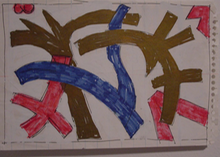
We all know the quoted studies on how it takes 20, 30 years for valid research findings to become accepted as standards of care, but in today's healthcare, the phenemenon of innovation extends beyond considerations of diagnosis and treatment to the very nature of the profession, roles, responsibilites, relationships, models of collaboration and tool sets. And the demands on individuals and systems to change have become intense. This was also the case in the transition in art in the early 20th century; for decades, stylistic change was glacial, "movements" were well established. Before 20th Century art, a painter of Picasso's power and influence would never have changed style; yet change was Picasso's raison d'etre. Today, in healthcare we see lots of forced change under the guise of innovation. It will be interesting to see which of those changes will constitute "true" innovations with lasting affect. Of course, the art world didnt have a multi-billion dollar Federal program pushing one form of innovation over many others, but, as I have said before, evolution in this regard cannot be stopped. As to whether innovation can be forced, Galenson's opinion can be summed up in this quote:
“In 1965, Harold Rosenberg, who was himself a leading critic, conceded that “Manipulated fame exists, of course, in the art world.” Yet he emphasized that this fame was fleeting: “The sum of it is that no dealer, curator, buyer, critic or any existing combination of these, can be depended upon to produce a reputation that is more than a momentary flurry.” Real power in the art world came from only one source: “the single most potent force in the art world is still, in the last analysis, the artist . . . “
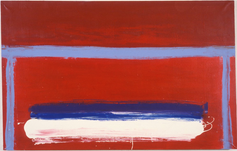 Many of us see the current vision of EHR's and meaningful use as being "momentary flurry". The question then becomes, however, what will remain or what will evolve, if, to paraphase Galenson, "the single most potent force in healthcare is still, in the last analysis, the physician" And long these lines, Galenson noted:
Many of us see the current vision of EHR's and meaningful use as being "momentary flurry". The question then becomes, however, what will remain or what will evolve, if, to paraphase Galenson, "the single most potent force in healthcare is still, in the last analysis, the physician" And long these lines, Galenson noted:
“Important artists are innovators whose work changes the practices of their successors. The greater the changes, the greater the artist. It is those artists who have the greatest influence on their peers – and the artists of later generations – whose work hangs in major museums, becomes the subject of study by scholars, and sells for the highest prices.” “Perhaps the importance that we must attach to the achievement of an artist or a group of artists may properly be measured by the answer to the following question: Have they so wrought that it will be impossible henceforth, for those who follow, ever again to act as if they had not existed?”
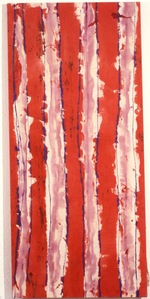
True in medicine up to a point: names like Semmelweis, Lister, Pasteur; Olser, Salk, Penfield, Freud all fit the criteria. But we have lost, or fragmented, the idea of influencers at these levels; these days innovation, if it happens at all, happens within specialties, not across the overall 'professional identity' of physicians as a class. Who among our peers today is doing work that will forever change the way we think about medicine? Have we restricted our growth as a profession by limiting the innovation paths between and across disciplinary boundaries? And how do we treat our innovators?
“Significant artistic innovators are of course not simply initially unappreciated: they are vigorously attacked. Any innovative new art form necessarily involves the rejection of older values. For practitioners and admirers of those older values, this causes “a sense of loss, of sudden exile, of something willfully denied . . . a feeling that one’s accumulated culture or experience is hopelessly devalued.” It is hardly surprising that those committed to established forms refuse to accept innovations that would make those forms obsolete, and thus cause a devaluation of their own knowledge and skills. This phenomenon is not unique to art, but in scholarship is known as Planck’s principle, named for the physicist Max Planck, who observed that “a new scientific truth does not triumph by convincing its opponents and making them see the light, but rather because its opponents eventually die, and a new generation grows up that is familiar with it.”
I hope Plancks sentiment is not true, but I have unfortunately experienced the vociferous Kubler-Rossian anger of my peers (my peers!) because of something as simple as an unexpected demand on their intellectual attention; the very existance of threats to 'retire' due to changes in form and function of the practice of medicine is a sad commentary on the lack of capacity of whole generations to organically evolve their professional identity and take entrenched reactionary positions.
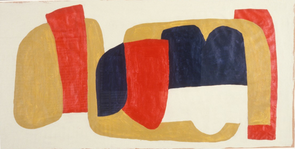
“Examples of great artists who evolved from youthful revolutionaries into aging reactionaries are not difficult to find. Leo Castelli opened an art gallery in New York in 1957, and only a year later presented Jasper Johns’ first one-man exhibition, which was an immediate sensation in the art world. Castelli became the leading art dealer of the 1960s and 1970s, representing Johns, Robert Rauschenberg, the major Pop artists – notably Andy Warhol, Roy Lichtenstein, and Claes Oldenburg – as well as such younger stars as Frank Stella, Richard Serra, and Bruce Nauman. In an interview in 1994, Castelli recalled his dismay when the 1993 Whitney Biennial exhibition had forced him to recognize the impact of new developments that had been occurring in advanced art, with the increased use of new media, including video, and the prominence of younger German and Italian painters: “I had to accept the fact that the wonderful days of the era I had participated in, and in which I had played a substantial role, were over.” He initially could not accept the legitimacy of the newer art: “I felt that what had been there before, during the great era of the sixties, was unbeatable, and that nothing of that kind could succeed the heroic times that we had had here in New York.” On reflection, however, he realized that he had to accept the new art, so that he would not repeat the universal error of aging art experts: “There was a certain sadness that I felt about it, but well, with the Whitney show, I realized that I had to change my attitude, and not be rejecting – as people generally are, as you know. I would say that there is a span, a relatively short span, in which somebody really lives seriously with a period of art and after that, all those people – whether it be dealers or art historians or museum directors – after that they don’t see what’s going on anymore. They reject whatever comes after that. I didn’t want to be one of those.”
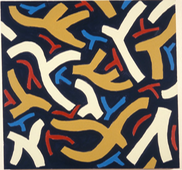
In my mind I am still an 'early career' physician (and I still should wear size 32 pants), but I did find myself recently telling a "when I was your age" story to some genuinely early career physicians about what life was like being on call for 36+ hours straight every third night. And despite whatever objective criteria were the basis of such changes in residency training, at a very basic level I believe there was something significant lost in the transition. Comparing my experience to theirs, I completely understand what Castelli was saying when he felt that "what had been there…was unbeatable, and nothing of the kind could succeed the heroic times we had". However, I am an unrepentant career chameleon, so real my worry is that such a deep, left brain response to innovation by a entire (and vitally important) generation or two of physicians is going to hold back the ability of our profession to see the opportunity in front of them to recapture/reengineer our leadership role in the healthcare system
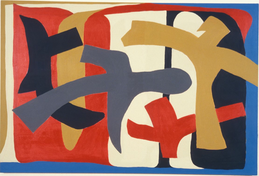
“Significant innovations inevitably impose losses on those who cherish the values the new innovations reject, but of course they also offer gains. The artistic innovators who are faced with attacks on their new methods understand this. For example, Kazimir Malevich remarked in 1919 that “People always demand that art be comprehensible, but they never demand of themselves that they adapt themselves to comprehension.” When artists create significant new forms of art, they almost invariably see their innovations denounced by critics who are judging their new methods by the rules or conventions of earlier art, which the innovators have intentionally discarded. Thus in 1914, Wassily Kandinsky warned against critics who claimed to have found flaws in new art: “one should never trust a theoretician (art historian, critic, etc.) who asserts that he has discovered some objective mistake in a work.” Kandinsky explained that, in ignorance of the purpose of the new work, the detractor was invariably applying outmoded criteria: “The only thing a theoretician is justified in asserting is that he does not yet know this or that method. If in praising or condemning a work theoreticians start from an analysis of already existing forms, they are most dangerously misleading.” Ideally a critic would take care to understand the new methods of the innovative new work, then explain it to a wider audience: “he would try to feel how this or that form works internally, and then he would convey his total experience vividly to the public.”
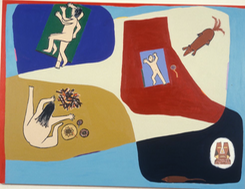
And this is even worse with physicians, who are cognitively trained and culturally oriented to finding pathology. You cannot get in front of a group of doctors with a new idea -- even one with gobs of rational scientific data behind it -- and expect it to be accepted. They are compelled to poke, prod, dissect and otherwise deconstruct it to find the flaws. And they approach every problem with the presumption that whatever is seen on the surface is hiding some weakness or imperfection; because the worst thing a physician can do is miss something that is wrong. There is an additional problem when they are asked to evaluate or assess the value of something that is based on principles with which they are unfamiliar; rather than say "gee, help me understand how this works", they make analogies to the familiar and allow those "outmoded criteria" to run their judgement.
“Yet the difficulty of understanding innovative new art has increased over the course of the modern era, because of the increasing prominence of highly conceptual art. Understanding advanced art would subsequently be primarily intellectual rather than visual: “An advanced painting of this century inevitably gives rise in the spectator to a conflict between his eye and his mind; as Thomas Hess has pointed out, the fable of the emperor’s new clothes is echoed at the birth of every modernist art movement. If work in a new mode is to be accepted, the eye/mind conflict must be resolved in favor of the mind; that is, of the language absorbed into the work.”
I'll let Picasso take this one: “The fact that for a long time cubism has not been understood and that even today there are people who cannot see anything in it, means nothing. I do not read English; an English book is a blank book to me. (But) this does not mean that the English language does not exist. Why should I blame anybody else but myself if I cannot understand what I know nothing about?”
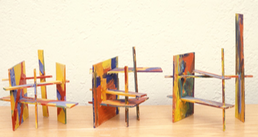
The future of medicine lies in our ability and willingness to absorb and be changed by new ideas.
“In part, the difficulty at issue here is simply that of assimilating innovative new art in a period of rapid change"
"In part, the difficulty at issue here is simply that of assimilating innovative [new approaches to the art of medicine] in a period of rapid change."
More on how we can accomplish this in the next set of posts.